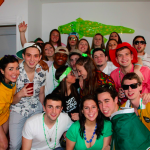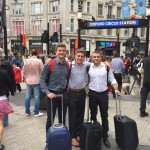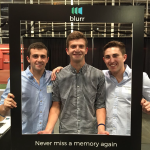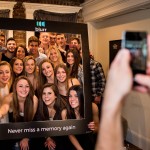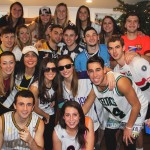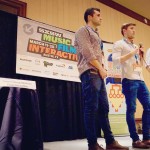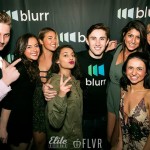It’s easy to dismiss student startups as half-baked ideas meant to puff up someone’s resume. That pessimistic attitude stems from the fact that half of all startups fail within four years of starting, with the majority of those failures being due to “incompetence.” So where does that leave Blurr, an app created by three Northeastern students where users can post pictures within a geographical radius for others to view and download within 24 hours?
A cut above the rest.
“We didn’t start a company because we wanted to say we started a company. I think when people do that, they kind of lose track,” said Blurr Co-Founder Dan Korman, a third year Northeastern student. Instead, the Blurr trio (which includes Korman and fellow classmates Daniel Arvidsson and Sam Marley) started their company to fix a problem. After throwing a going away party for their friend and realizing the next morning they had no pictures from the night before, they became fixated on solving their dilemma.
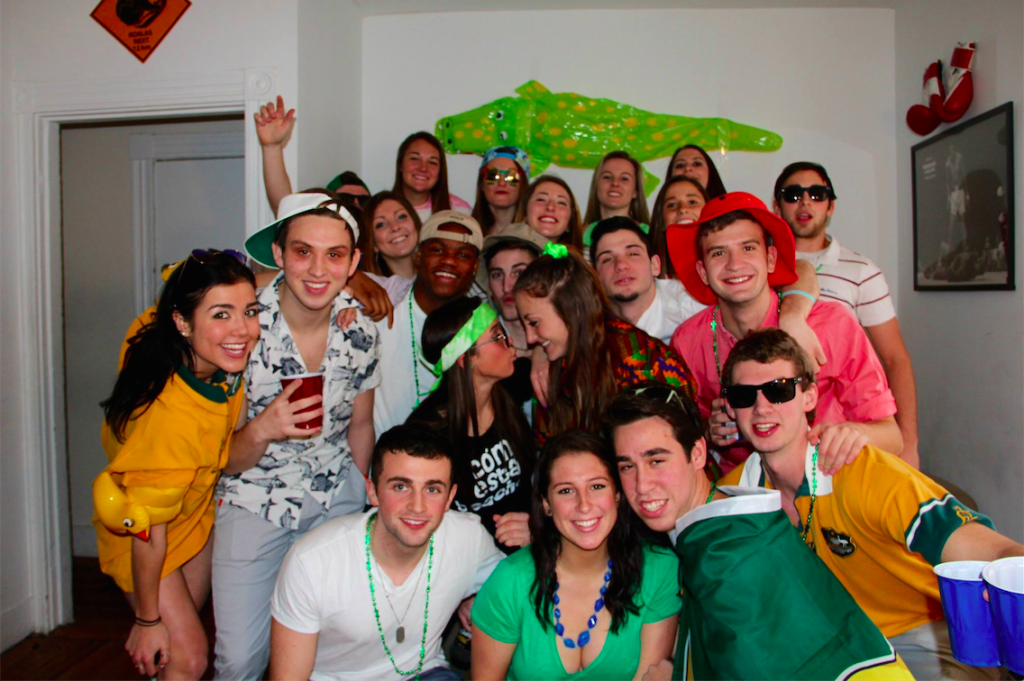
After working with Northeastern’s student led venture accelerator and design studio (IDEA and Scout respectively), and placing in the Student Startup Madness top eight at the South by Southwest Interactive Festival (SxSW) in Austin, TX, the Blurr co-founders’ determination culminated in the app finally being released on Mar. 23. While the stereotypical millennial developer may have claimed success at this point and walked away, Arvidsson admits that “it seems like we have done a lot, but we really haven’t accomplished that much… We set out to solve this one problem and we are not going to stop until we do.”
While Arvidsson’s pure grit seems to be one of Blurr’s greatest assets, another key part of Blurr’s success comes from making their idea resonate with potential users. At SxSW, participants in the Student Startup Madness competition had four minutes to prove their idea to the crowd. Blurr started with the story of their friend’s going away party and finished with a similar story, one year later at the exact same party, taking the exact same picture, but this time the picture was taken on Blurr. That simple message was able to show the audience not only what problems the app could solve for them as users, but also that the guys at Blurr effectively “solved their own problem,”as Marley puts it.
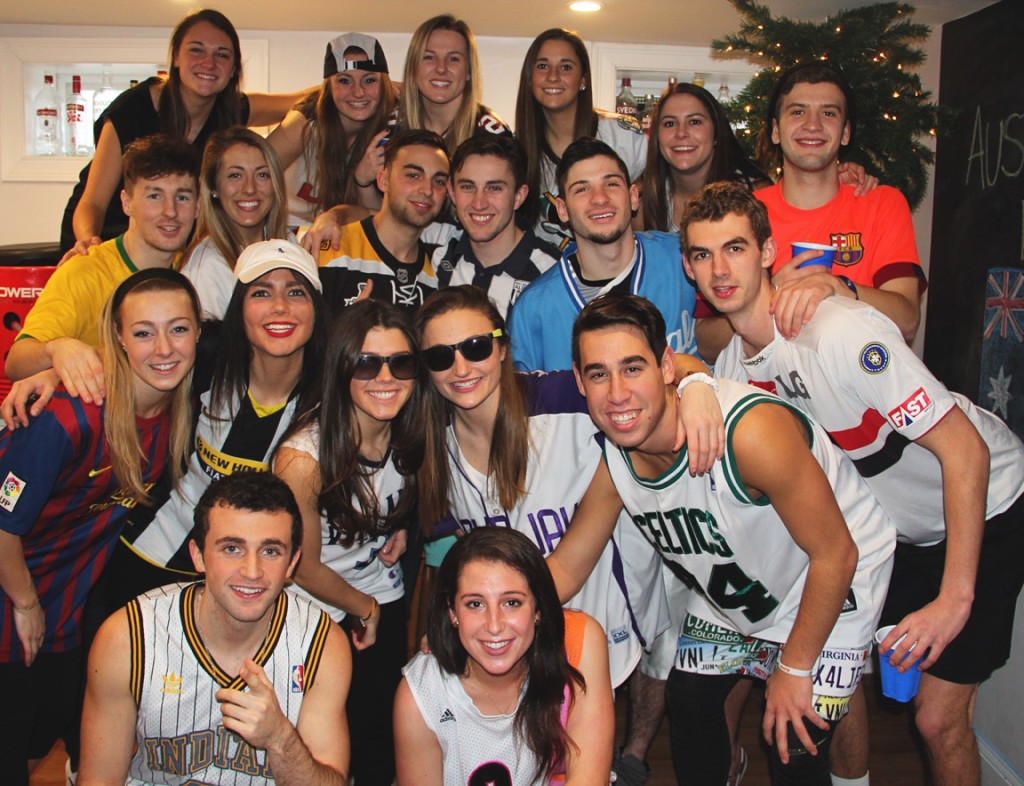
That ability to connect is something any social media mogul would naturally hope to achieve, and was one of the biggest takeaways for Marley from SxSW who said that “if you spend all your time plugging your own company, then you’re not going to make any lasting relationships.” With that in mind, Blurr has focused on more personal and direct efforts to promote themselves, whether that be taking the time to really get to know people at conventions, or through one of their 46 brand ambassadors. These ambassadors are fellow Northeastern students who have gone above and beyond to build the Blurr brand, whether that be through writing articles or creating launch videos. “We have already seen that leveraging the power that Northeastern has is great and is going to drive us forward,” said Arvidsson, who also made sure to stress “how important and how great all of our brand ambassadors have been.”
With Blurr now sitting pretty in the Apple app store, the developers have received high praise for their accomplishments, however, they never saw failure as an option when it came to Blurr’s release. “I’m not going to waste so much time and do all this without launching the thing,” said Marley. The drive to work beyond what warrants a pat on the back seems to be the backbone of what defines Blurr’s leadership. They even went as far to say that “to be told ‘good job’ is the single biggest hurtful compliment one can receive,” in a Jan. blog post, and everything they have done to date seems to be motivated by the desire to avoid the label of doing only a good job.
As far as the app’s success on the market, while no download numbers have been released, Arvidsson made it clear that downloads aren’t everything, and that “having a million people use the app in a million different places is useless. We’re more concentrated on actually getting these real concentrated pockets of users.” Blurr has done this through events like their release party which happened on Mar. 31 at Down Nightclub where users spent the night partying and Blurring away. After the party, Blurr saw a massive usage increase the next day at 2:00 a.m., indicating that users were coming back and downloading the memories they might have missed the night before, perfectly in line with the app’s design.
So what’s next for Blurr? That question seems to have a lot of answers including the possibility of Arvidsson, Korman and Marley co-oping for themselves in the near future, potentially hiring a co-op of their own, making sure they focus on taking over the Northeastern market and plans to launch a revenue building platform that heightens the user experience in a way similar to what companies like Instagram have been able to do.
While those are all solid goals, what really stands out and proves that Blurr isn’t just another student startup are the founders’ attitudes toward their long term plans. They aren’t about making money, selling everything off to Mark Zuckerberg, or even making a name for themselves. Rather the common theme for their vision for the future was built around realizing that “working on something that you love and that you don’t really consider work is what makes you happy day to day and when it stops being like that is when we would consider stopping work on it,” said Marley.
Photos courtesy of Daniel Arvidsson, Matthew Modoono, Northeastern University and Flavor Media
